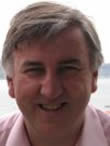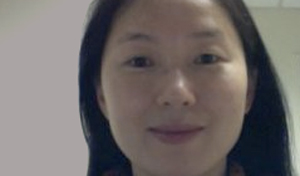The Condensed Matter & Surface Sciences Colloquium series presents Dr. Richard E. Palmer of the University of Birmingham, United Kingdom, on Thursday, Oct. 24, at 4:10 p.m. in Walter 245.
Palmer will speak on “Organizing Atoms: From Atomic Manipulation To Size-Selected Atomic Clusters.” Palmer is Professor of Experimental Physics and head of the Nanoscale Physics Research Laboratory at the University of Birmingham.
“Atomic manipulation is the extreme limit of nanotechnology,” he says in his abstract. “I will discuss the manipulation of polyatomic molecules—notably chlorobenzene (C6H5Cl or PhCl)—anchored to a silicon surface, with a focus on new mechanisms [1] for single molecular manipulation via electron injection. Such mechanisms may (eventually) be relevant to chip-scale molecular manufacturing.
“I will report site-specific non-local atomic manipulation (leading to molecular desorption) of PhCl [2]: effectively this is ‘remote control’ of molecular manipulation. This non-local electron attachment mechanism is also thermally activated (barrier 0.4 eV) and suppressed by the proximity of the STM tip itself, both results explicable in terms of electron-driven excitation to an intermediate physisorbed state. Moreover we find that C-Cl bond dissociation in the molecule is also thermally activated [3], with an energy barrier of 0.8 ± 0.2 eV, which we correlate thermal excitation to the physisorbed (precursor) state of the molecule, where electron attachment occurs.
 “The controlled deposition of size-selected nanoclusters, assembled from atoms in the gas phase, is a novel route to the fabrication of surface features of size <10 nm [4]. Monodispersed, monometallic and bimetallic [5] cluster arrays represent new model catalysts [6] and a route to protein biochips [7]. Theoretical treatments of the atomic structure of clusters far outstrip direct experimental measurements. Here the atomic structure of the deposited clusters is revealed experimentally [8] by aberration-corrected scanning transmission electron microscopy (STEM) in the high-angle annular dark field (HAADF) regime; we can “count” atoms [9] and thus obtain 3D information rather than just 2D projections.
“The controlled deposition of size-selected nanoclusters, assembled from atoms in the gas phase, is a novel route to the fabrication of surface features of size <10 nm [4]. Monodispersed, monometallic and bimetallic [5] cluster arrays represent new model catalysts [6] and a route to protein biochips [7]. Theoretical treatments of the atomic structure of clusters far outstrip direct experimental measurements. Here the atomic structure of the deposited clusters is revealed experimentally [8] by aberration-corrected scanning transmission electron microscopy (STEM) in the high-angle annular dark field (HAADF) regime; we can “count” atoms [9] and thus obtain 3D information rather than just 2D projections.
:Results include mass spectrometry of passivated Au clusters [10], atomic imaging of Au adatom dynamics on the surface of Au923 magic-number nanoclusters [11], first atomic imaging of small Au clusters, notably Au55 and Au20 [12,13] and a method to explore the potential energy landscape of clusters, by the purposeful transformation of clusters under the e-beam to more stable configurations [14]. We hope these new data will help to enhance theoretical treatments of both cluster structure and dynamics, e.g., via refinement of empirical potentials.
“Finally, a new kind of cluster beam source, designed to allow super-abundant generation of size-selected nanoclusters including binary systems, will be proposed,” he says.




















Comments